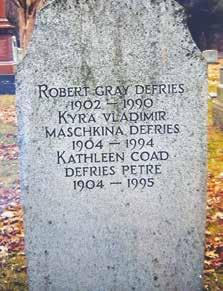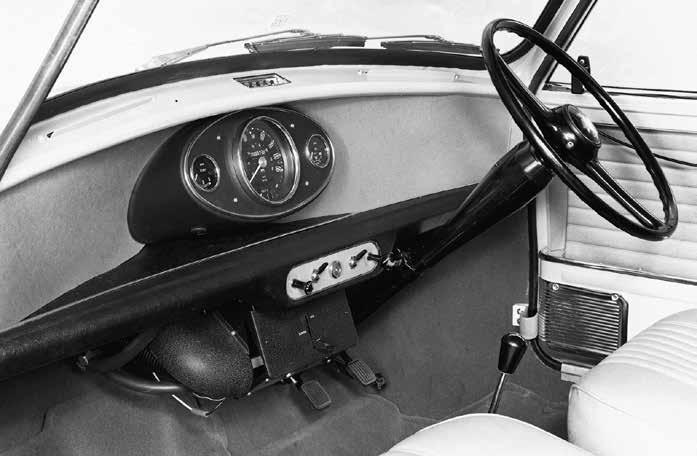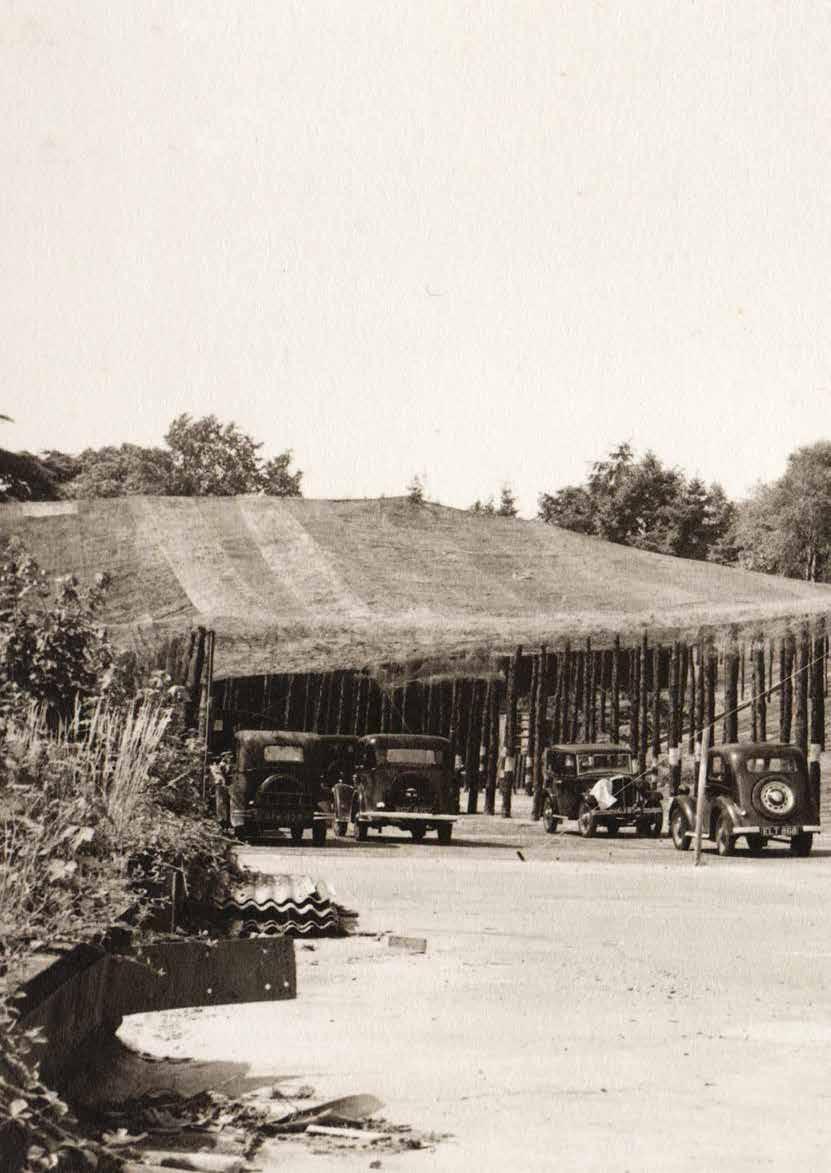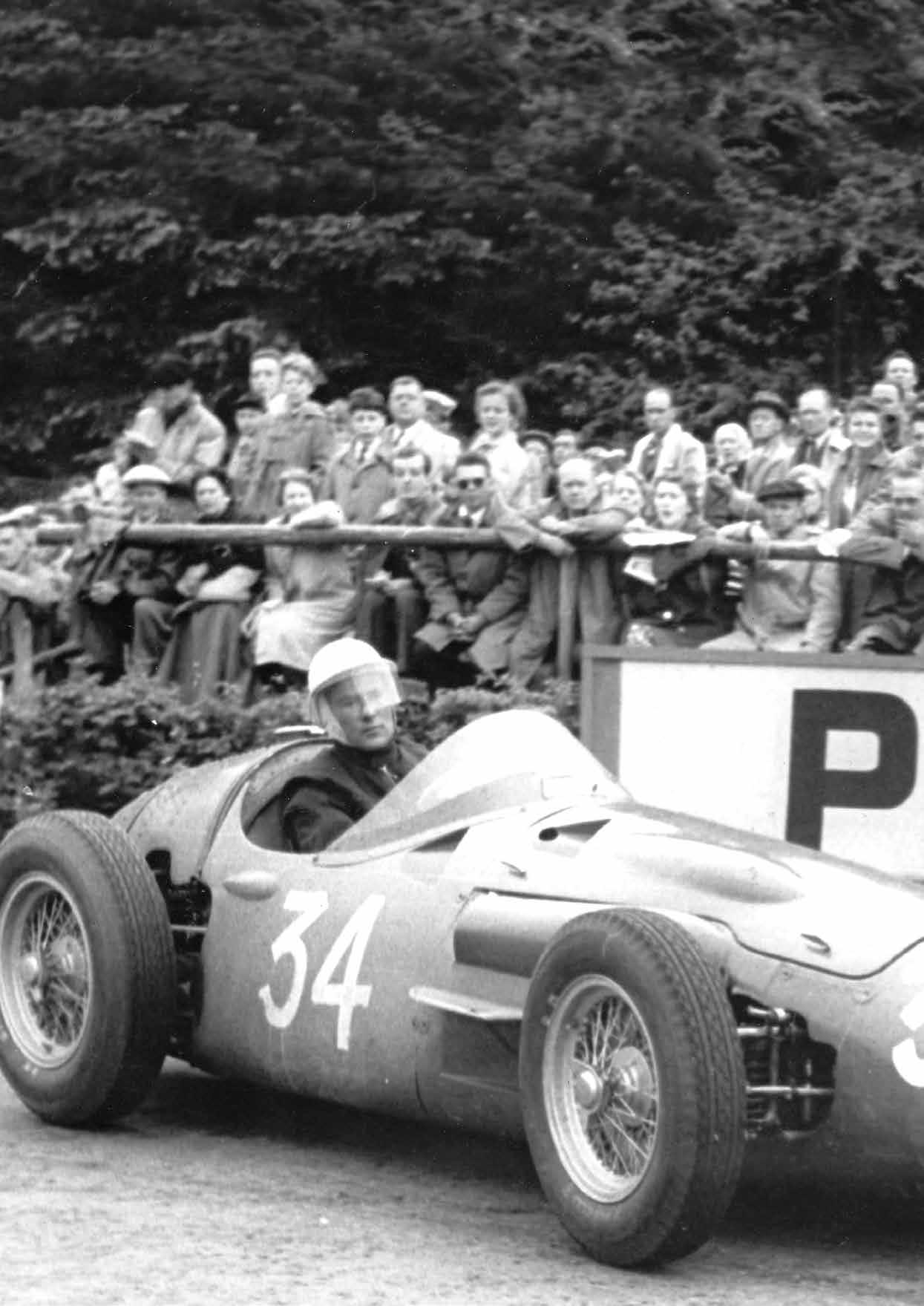
10 minute read
The Darling of Brooklands Part 2
THE DARLING OF BROOKLANDS
In the second part of Kay Petre’s story, we find out
Advertisement
about her racing life and later career as a journalist and automotive designer.
Words: Tim Morris Photos: Brooklands Museum Collection
Kay Petre was very busy in 1935 She gained her gold star by lapping Brooklands at 127.38mph in a Delage and she also purchased another car for herself, Raymond Mays’ 1-5 litre supercharged Riley which she promptly sprayed her favourite shade of blue. The year’s highlight was the famous head-to-head with another very fast lady, Gwenda Stewart, for the title of ‘Brooklands Speed Queen’. Brooklands had arranged for the challenge to take place and the resulting publicity was immense, as expected and desired. Kay herself was not too happy with the furore but saw it as an opportunity to promote Brooklands and women drivers in general.
Gwenda Stewart was driving a powerful 1.6-litre supercharged Derby-Miller and Kay went behind the wheel of the huge Delage once again. The race was to be a twohander and Gwenda went out in practice, recording a lap of 130mph with Kay following at 134.75mph. No race had ever been run at Brooklands at such astronomical speeds and the Brooklands authorities began to get cold feet. A compromise was decided as it was felt it was far too dangerous to have them racing each other, so they would run three laps individually.
Kay powered away despite the Delage’s slipping clutch and peaked at 134.24mph and Gwenda reached 133.67mph. However, the Derby-Miller’s exhaust blew and she couldn’t complete the run. Kay won the crown, and both were awarded their 130mph Brooklands badges, the only two women ever to do so among a scant handful of men. However, Kay’s reign was short-lived as Gwenda went out again the next day with a repaired exhaust and hit 135.95mph.
Kay returned to Riley in 1935 at Le Mans when she partnered her friend Elsie Wisdom. They were forced to retire that year, but she was back again two years later driving an Austin 7 Grasshopper with George Mangan, but again had to retire. That race was marked by tragedy when the popular driver Pat Fairfield died after trying to avoid a multiple collision.
A works Riley 1.5-litre was entered for Kay in all three of the South African Grands Prix in January, 1937, but she was hampered by incorrect fuel for the car and failed to finish in two of them. She
Kay and Doreen Evans at Shelsley Walsh in 1937 during another all-women driver contest to see who would be quickest up this hill climb. In the end, Kay took the win with a time of 43.8 seconds.

However, the visit was still a memorable one for Kay as she befriended ace German driver Bernd Rosemeyer and he allowed her to drive one of the fabulous and almost unbeatable 6-litre Auto Union Grand Prix cars. The only other woman to drive such a car was Elly Beinhorn, Bernd’s wife. This was one of Kay’s most treasured memories and she coveted a picture of her with Rosemeyer and driver Ernst Von Delius. Sadly, Von Delius was to perish at the German Grand Prix just six months later having collided with Richard Seaman’s Mercedes-Benz.
Accelerating career
Kay’s career was accelerating as fast as her speed on the track and by 1937 she was driving for the Austin works team of single seat racers. She would tour with the dedicated team of drivers and mechanics and this was one of the happiest periods of her life. It was an eventful year for Kay with a near tragedy at Donington during the Empire Trophy when team-mate Charles Dobson had to be dragged from a burning car in the pits, Kay’s own car nearly caught fire when a needle valve broke in the carburettor. At the Nuffield
Trophy race later that year, an oil pipe burst spraying her with hot oil and scalding her leg. She got back to the pits with her leg hanging out of the cockpit and her blue overalls soaked green. Back at Brooklands, she took part in the Relay Race, where again she was sprayed with hot oil but the Austin team won the race.
Not only did Kay compete in circuit racing but she also took part in hill climbs and rallies. In 1937, there was a similar event to the Brooklands Speed Queen at Shelsley Walsh. Kay was up against other lady drivers and Brooklands favourites including old team-mates Eileen Ellison, Joan Richmond, Elsie Wisdom and Doreen Evans. Kay was in her supercharged Austin and Doreen inevitably in an MG managed equal times and so a final head-to-head was agreed, with Kay recording a storming time of 43.8 seconds to take the title of fastest woman at Shelsley Walsh.
It all ended in near tragedy, though, in September 1937 when Kay was practicing for the BRDC 500 mile race on the Byfleet Banking in her single-seat Austin. Reg Parnell, driving a much bigger MG Magnette, lost control in an overtaking manoeuvre on the banking above her and plummeted down the slope hitting Kay’s car and causing it to roll. She suffered serious head injuries and her life was in peril for several days. When she began to recover, her body was partially paralysed but that eventually eased into just a partial paralysis of one side of her face.
Once she had recovered, she campaigned for Reg Parnell to retain his competition licence which had been revoked following the accident as she considered it just to be a simple racing incident. It was very much due to her persistence with the authorities that he was finally reinstated. They remained good friends and Reg went on to become a wellknown Grand Prix driver after the war.
Kay was also determined to get back on the track to show that she had not lost her confidence. She did so in March, 1938
with her Riley. However, this was to be her last appearance on track at Brooklands as her confidence and ability had, sadly, not returned. Her well-tuned Riley’s engine was later used by Percy Maclure in his own Riley the following year.
It seemed bad luck was haunting Kay. Having recovered sufficiently, she returned to Brooklands as a spectator and, in May 1938, she and a group of friends including such Brooklands luminaries as Noel Pope, Betty Haig, Jill Thomas and Douglas Hawkes were walking back to the pits along the bottom of the track as the Junior Car Club International Trophy Race was taking place. Just after John Cobb had pulled away in his Bentley to start the race, Joseph Paul was powering his V12 Delage up the Finishing Straight and past the pits when it burst into flames.
As the heat became too intense, he indicated left with his arm and started to pull over but a fast moving Darracq, driven by Lace, collided with him and both cars swerved up the safety bank and crashed through a wooden paling. It plunged down the other side where the Delage pinned a female spectator, who was pulled out by the crowd but unfortunately died at the scene. Joseph Paul leapt from his blazing Delage with his overalls on fire and suffered concussion and severe burns. Lace recovered the Darracq and, unbelievably, re-joined the race later. Races were not stopped for such incidents at that time and it was won by Percy Maclure, driving without a helmet, in a Riley 6 and just pipped Raymond Mays in his ERA. As a result of the accident, Kay suffered further head and facial injuries and her friends in the group were also wounded, including Murray Jamieson, an Austin designer, who died later from his injuries.
Racing retirement
Kay retired from circuit racing but, still craving competition, she took up more rallying, initially as a navigator with the Singer team. She drove in the Alpine rally with Jackie Astbury and felt it was as near to road or circuit racing as you could get, particularly on the timed sections. She also navigated with Joan Richmond in the RAC Rally in a Riley and the Monte Carlo
Rally, starting from John O’Groats in a Railton.
She also began to write about motoring matters for

Kay, centre, takes time away from driving to spectate from the Fork pits during the BRDC 500 race in 1936. She’s with Charles Goodacre, left, and Jack Pierce, right.
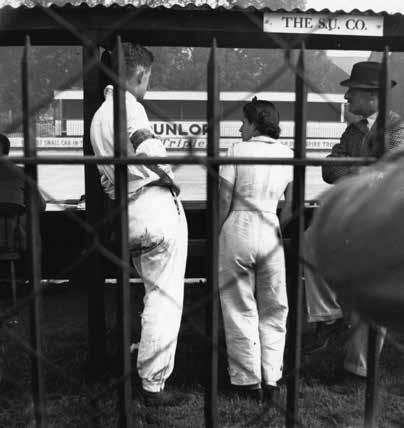
the Kemsley group of newspapers. On one such assignment for the Daily Sketch while covering the Monte Carlo rally in 1939, Kay was driving a group of friends to dinner at the Hotel Ermitage in Digne. Approaching a dangerous crossroads bad luck visited again when she was in a head-on collision with a lorry. Fellow journalist Major Reggie Empson was killed outright in the passenger seat and Kay was rushed to hospital once again with more head injuries. Following the accident, matters got worse for Kay and she was charged with manslaughter and the lorry driver was also charged. Kay, however, was not convicted and the matter was settled out of court by the Petres paying £4000 (£183,000 today) in damages to Empson’s widow.
Despite this, Kay continued with her writing career and became the first woman to be accepted into the British Guild of Motoring Writers. When war broke out, she worked for the Ministry of Food, writing about nutritional matters to help the public feed themselves during the conflict. After the war, she continued as a
food columnist for the Daily Sketch and also as a motoring correspondent for the Daily Graphic. At the Graphic, she would conduct road tests on new cars such as the time in 1950 she took the new Armstrong-Siddeley 18hp Lancaster on a 1000- mile continental road trip. In 1952, she returned to Austin and was appointed the colour consultant for the company’s range of cars. This included the Austin A40 and the new Mini for which she designed interior fabrics as well. She based her colour choices on the modern shades found in the home of
The huge size of the Delage can be gauged in this photo with Kay at the wheel. She drove this car to 134.75mph during her head-to-head dual with Gwenda Stewart.

This press cutting shows the terrible damage to Kay’s single-seat Austin after Reg Parnell’s car collided with it. Kay later campaigned for Parnell’s race licence to be reinstated.

the 1950s, but her ideas were perhaps a little too radical for Austin and were often not adopted. One of the colours for both of those cars was a very pale blue, Kay’s favourite colour, and very similar to her own overalls and racing cars, so perhaps some were used.
Leonard Lord continued her employment when Austin was absorbed by the British Motor Company. Sadly though, Kay’s succession of serious head injuries caused her problems as she approached her mid-fifties, and she retired suffering from recurring headaches and memory loss. Henry Petre had always supported his wife throughout her enormous successes and deep tragedies, and it was a great loss for her when he died in 1962 at the age of 77. She returned to Canada, yet despite her fondness for winter sports she found it too cold and returned to London in the mid-1960s, living in St John’s Wood.
She died in Parkwood House, a care home in Camden on the 10 August, 1994 at the age of 91 years. She returned to Canada one final time to be interred in
the grave of her brother, Robert, and his wife in the St James’ Cemetery, Toronto. Her newspaper obituary was written by Brooklands Member and original custodian of the Brooklands photo archive, Dr Norman Barfield.
Two years later, she was inducted into the Canadian Motorsport Hall of Fame where her nephew Dave Defries summed her up: ‘She was certainly the firecracker in our family and there was always a sense of awe when you were around her.’
